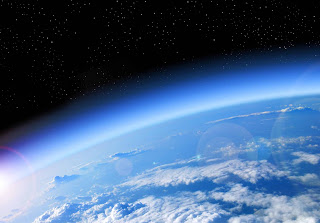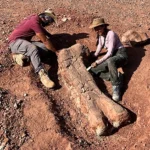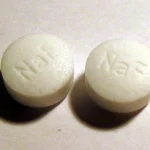
The ozone layer is one of the layers of the earth’s atmosphere that is mainly contained in the stratospheric layer at a distance of 15 to 30 km from the earth’s surface. Ozone is a molecule with a strong odor and a blue color. Out of 10 million air molecules, only 3 are ozone, so it’s much less common than other molecules like oxygen, which make up about 2 million out of 10 million air molecules. The atmosphere is extremely important for life on earth. Ozone molecules absorb the ultraviolet UVB light that is so damaging to the planet. Ozone helps protect people, animals, plants and marine life from the sun’s harmful rays.
Ozone is a naturally occurring molecule.
The ozone layer was discovered by Charles Fabry and Henri Buisson, French physicists, in 1913.
An ozone molecule is made up of three oxygen atoms.
The British meteorologist G.M.B. Dobson developed a spectrophotometer and established ozone monitoring stations around the world between 1928 and 1958. His work in this area led to the naming of the ‘Dobson unit’, which refers to a measure of ozone overhead.
It has the chemical formula O3.
The ozone layer is able to absorb up to 98% of the sun’s ultraviolet light, and 90% of the ozone is located in the stratosphere layer of the atmosphere.
The natural level of ozone in the stratosphere is a result of a balance between sunlight that creates ozone and chemical reactions that destroy it.
The UVB radiation that is screened out by the ozone layer can cause health issues when exposure is too high, which is why the ozone layer is vital to human and animal survival.
The total mass of ozone in the atmosphere is about 3 billion metric tons.
UVB radiation can cause immune system suppression, cataracts, genetic damage and even skin cancer.
Although high concentrations of UVB exposure can be dangerous, some is necessary for the production of vitamin D, which is also vital for human health.
The peak concentration of ozone occurs at an altitude of roughly 32 kilometers (20 miles) above the surface of the Earth. At that altitude, ozone concentration can be as high as 15 parts per million (0.0015 percent).
The ozone layer has been damaged by substances known as chlorofluorocarbons (CFCs) which were used in a variety of products such as insulating foam, solvents, and refrigerants. The molecules in CFCs destroy ozone molecules at a rate of 1:100,000 which make them very dangerous to the ozone layer.
Although ozone high up in the stratosphere provides a shield to protect life on Earth, direct contact with ozone is harmful to both plants and animals (including humans).
A slow but nevertheless important effort has been made worldwide to ban or limit the use of CFCs in an attempt to stop the destruction of the ozone layer.
In the troposphere near the Earth’s surface, the natural concentration of ozone is about 10 parts per billion (0.000001 percent).
If people stop producing ozone-destroying substances the ozone layer may be capable of recovering by 2050.
According to the Environmental Protection Agency, exposure to ozone levels of greater than 70 parts per billion for 8 hours or longer is unhealthy.
Some countries have banned the use of CFC aerosol sprays altogether, such as Canada, Norway, and the U.S. other applications of CFCs were still allowed however.
Ground-level, “bad,” ozone forms when nitrogen oxide gases from vehicle and industrial emissions react with volatile organic compounds (carbon-containing chemicals that evaporate easily into the air, such as paint thinners).
A hole in the ozone was discovered in the Antarctic in 1985. It is not an actual hole as many people believe, but it refers to a loss of 60% of the ozone that is usually present from September to November each year.
Without ozone, the Sun’s intense UV radiation would sterilize the Earth’s surface.
In other regions around the world the ozone layer has been depleted by approximately 20%.
In the lower atmosphere (the troposphere) near the Earth’s surface, ozone is created by chemical reactions between air pollutants from vehicle exhaust, gasoline vapors, and other emissions.
The Montreal Protocol, enacted in 1989, was put in place to try to protect the ozone layer by phasing out, worldwide, substances that deplete the ozone layer. It has been making a difference and the ozone layer is expected to recover.









